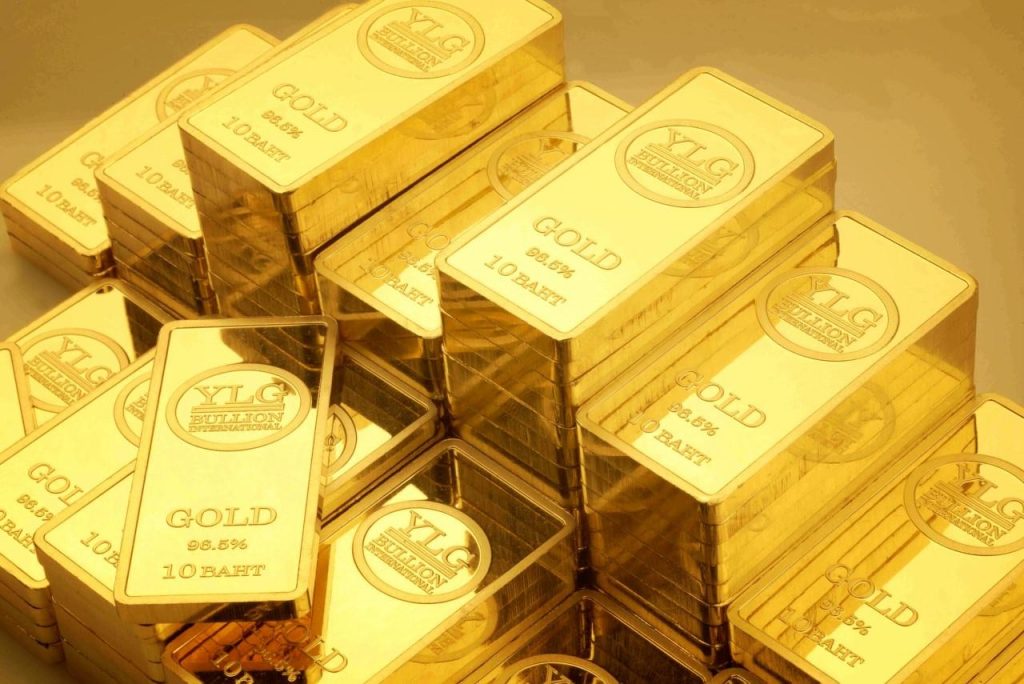Gold IRAs, also known as precious metals IRAs, offer investors the opportunity to diversify their retirement portfolios with physical gold and other precious metals. These types of retirement accounts are similar to traditional IRAs, but instead of holding paper assets like stocks and bonds, they hold physical assets like gold bars and coins. To set up a Gold IRA, investors must work with a specialized custodian or trustee who is knowledgeable in IRS regulations and can help ensure that the investment complies with tax laws. The popularity of Gold IRAs has grown in recent years due to economic uncertainty and the potential for gold to act as a hedge against inflation and market volatility. By adding a Gold IRA to their retirement portfolios, investors have the potential to increase their portfolio diversification and protect their wealth over the long term.
Benefits of Investing in Gold IRAs
Investing in Gold IRAs can offer numerous benefits, making it a popular choice for sophisticated investors. As a safe-haven asset, gold acts as a hedge against inflation and economic uncertainty, making it an ideal addition to any retirement portfolio. Gold also has a track record of increasing in value over time, demonstrating its investment potential.
One of the biggest advantages of holding physical gold in an IRA is the tax benefits. Physical precious metals held in a self-directed IRA are not subject to capital gains taxes until they are sold. This can help investors maximize their gains while minimizing their tax liabilities. Additionally, investing in a Gold IRA can offer greater portfolio diversification and protect against paper asset market volatility.
When investing in physical precious metals, it is important to be aware of their fineness standards set by the IRS. These standards ensure that the metals meet purity requirements and can be accepted by an IRS-approved financial institution. The types of precious metals that can be invested in include gold, silver, platinum, and palladium. Gold bullion and coins are the most commonly invested types of precious metals for Gold IRAs.
Overall, investing in Gold IRAs can offer numerous benefits, including portfolio diversification, tax advantages, and protection against economic uncertainty. Investors need to work with an informed financial advisor and an IRS-approved financial institution to make informed investment decisions that align with their risk tolerance and retirement goals.
A variety of Precious Metals are Available for Investment
Investing in precious metals is a popular choice for those looking to diversify their portfolios and protect against market volatility. Self-directed IRAs allow investors to hold physical precious metals, including gold, silver, platinum, and palladium, in their retirement accounts. Each of these metals has unique properties and uses in industries such as jewelry, electronics, and automotive, making them valuable and sought-after commodities. In this article, we will explore the different types of precious metals investors can invest in through a Gold IRA and their potential benefits.

Gold Bullion Coins
Gold bullion coins are a popular choice for investing in a Gold IRA. These coins are known for their purity, weight, and country of origin. The most common gold bullion coins available for investment include the American Gold Eagle, Canadian Gold Maple Leaf, South African Krugerrand, and the Australian Gold Kangaroo.
The American Gold Eagle has a purity level of 91.67% and weighs 1 ounce. It is produced by the US Mint and is considered a legal tender coin. The Canadian Gold Maple Leaf has a purity level of 99.99% and weighs 1 ounce. It is produced by the Royal Canadian Mint and is one of the purest gold coins available.
The South African Krugerrand has a purity level of 91.67% and weighs 1 ounce. It is produced by the South African Mint and was the first gold bullion coin created for investment purposes. The Australian Gold Kangaroo has a purity level of 99.99% and weighs 1 ounce. It is produced by the Perth Mint and features the iconic Kangaroo design.
Investing in gold bullion coins can offer portfolio diversification and serve as a hedge against inflation and economic uncertainty. These coins are tangible assets with inherent value and are not subject to the same risks as paper assets such as mutual funds or exchange-traded funds. Gold bullion coins are also easy to buy and sell and can be stored in a secure, IRS-approved depository.
Gold Bars
Gold bars are another option for those looking to invest in precious metals through a Gold IRA. Unlike gold bullion coins, gold bars come in varying weights and can range from one gram up to 400 ounces. They also come with the added advantage of easier storage, as they can be stacked and stored more efficiently than coins.
While gold coins tend to have a higher premium due to their collectible value, gold bars are typically priced closer to the spot price of gold. Another advantage of gold bars is that they can be stored in segregated storage, meaning that the investor’s gold is stored separately from that of others. This provides greater security and peace of mind.
It’s important to note that when investing in gold bars, it’s imperative to purchase from a reputable gold dealer to ensure authenticity. Additionally, it’s essential to store them in a secure facility, such as an IRS-approved depository, to avoid loss or damage.
Overall, gold bars provide an excellent opportunity for investors looking to diversify their retirement portfolio with physical assets. By working with a trusted precious metals dealer and opting for segregated storage, investors can rest assured that their gold bars are secure and valuable for years to come.
Silver Bars & Coins
When it comes to diversifying a retirement portfolio and protecting against inflation, silver bars, and coins are an attractive option. They are tangible assets that can hold value over time and are a popular choice for a precious metals IRA.
Investors have a range of silver products to choose from, including American Eagles, Canadian Maple Leafs, and Australian Kangaroos. These coins are government-minted and have a guaranteed purity level, making them a trusted investment choice.
Alternatively, investors can choose from various sizes of silver bars. One-ounce, 10-ounce, and 100-ounce bars are common options that offer flexibility depending on an individual’s investment strategy.
It’s important to note that not all silver products are eligible for a precious metals IRA. The Internal Revenue Service (IRS) has set standards for purity levels, minimum fineness requirements, and other regulations. Working with a reputable precious metals dealer and IRA custodian can help ensure that investments meet IRS requirements.
In summary, silver bars and coins offer a tangible asset that can potentially hold value over time and protect against inflation. They are a popular choice for diversifying a retirement portfolio and should be considered as part of an overall investment strategy.
Other Precious Metals
These include silver, platinum, and palladium, all of which must meet certain fineness requirements as set forth by the IRS. While gold is often the primary focus of precious metals investment, diversifying with other metals can help further protect against market fluctuations.
Examples of common IRA-approved precious metals include American Eagle-proof coins and bullion, as well as Canadian Maple Leaf coins. These coins are minted by their respective governments and are highly coveted by precious metals investors. When seeking to add other precious metals to a retirement portfolio, it’s important to work with a reputable precious metals dealer and IRA custodian to ensure that investments meet IRS requirements and that they are stored securely in an IRS-approved depository.
Steps to Investing in Gold IRAs
If you’re interested in investing in gold IRAs, there are a few steps you need to take. In this article, we’ll break down the steps to investing in gold IRAs, from finding a reputable gold IRA company to setting up your account and choosing the types of precious metals to invest in. We’ll also discuss the potential benefits of gold IRAs, including tax advantages, inflation hedging, and asset protection. By following these steps and doing your due diligence, you can make informed decisions and build a retirement portfolio that includes this safe-haven asset class.
Step 1: Choose an IRS-Approved Depository and Financial Institution or Custodian
When investing in a gold IRA, choosing a reliable IRS-approved depository and a financial institution or custodian is crucial. The IRS requires that all precious metals be stored in an approved depository, and investors cannot take the gold home to avoid taxes and penalties. Thus, an approved depository ensures that the investor’s assets are safe, secure, and free from risk.
Several IRS-approved depositories and financial institutions or custodians are available for the storage of precious metals. For instance, Delaware Depository, Augusta Precious Metals, and Texas Precious Metals Depository are reputable depositories that provide dependable and insured storage solutions for gold IRAs. In terms of custodians, Equity Institutional, New Direction IRA, and Provident Trust Group are some of the trusted financial institutions that offer self-directed IRAs for precious metals investments.
Choosing the right depository and financial institution or custodian is crucial for a smooth and secure gold IRA investment experience. To safeguard your retirement portfolio, research and work with an approved depository and financial institution or custodian that aligns with your investment goals and preferences.
Step 2: Open a Self-Directed IRA Account with Your Financial Institution or Custodian
Opening a self-directed IRA account with a financial institution or custodian can be a straightforward process. The first step is to choose a reputable and IRS-approved institution that allows for self-directed accounts with the option to invest in gold. Some popular options include Equity Institutional, New Direction IRA, and Provident Trust Group. Once you’ve made your selection, you’ll need to fill out the necessary paperwork to establish the account. This typically involves providing some personal information such as your social security number, address, and date of birth. Your financial institution or custodian will guide you through the process and provide you with all the necessary forms to complete. After your account is established, you can begin to invest in gold and other precious metals, subject to the IRA contribution limits and guidelines set forth by the IRS. When opening a gold IRA, it’s crucial to do your research and choose a reputable custodian or financial institution that will allow you to make informed investment decisions and securely store your assets.
Step 3: Select the Type of Precious Metal You Wish to Hold in Your Account
A Gold IRA allows individuals to hold precious metals in a retirement account. The Internal Revenue Code specifies that select types of precious metals are eligible to be held in a Gold IRA account. These include gold, silver, platinum, and palladium, and they must meet certain fineness requirements. For example, gold must have a minimum fineness of 0.995, while silver must have a minimum fineness of 0.999. However, government-minted metals do not need to meet these requirements but must still be accredited by the relevant authority.
Typical types of gold products used in Gold IRAs include coins, bullion, and bars. Coins with bullion value such as American Gold and Silver Eagles, Canadian Maple Leafs, and South African Krugerrands are popular selections because they are widely recognized and easy to buy and sell. Bullion is available in bars or coins, and bars typically have lower premiums than coins. It is essential to choose an accredited precious metals dealer and a trustworthy Gold IRA company for purchasing and storing your assets properly. By choosing the right combination of precious metals, you can build a diversified retirement portfolio and protect your savings against economic downturns.
Step 4: Purchase the Precious Metal and Have it Shipped To Your Depository for Storage
Once you have decided on the type of precious metal you want to hold in your account, the next step is purchasing it and having it shipped to an IRS-approved depository for storage.
You can purchase precious metals through your financial institution or a reputable precious metals dealer. Once the purchase is completed, you’ll need to arrange for the shipment to an approved depository. Your precious metals dealer may be able to facilitate this process for you, or you can make the arrangements yourself.
It’s important to keep all necessary documentation for tax purposes, including proof of purchase and shipment, as well as confirmation of storage in an approved depository. This documentation will help ensure that your investment is compliant with IRS regulations and can help you avoid any potential penalties or fees.
Overall, the process of purchasing and storing precious metals in an IRA is simple and can provide an excellent way to diversify your retirement portfolio and protect against economic uncertainty.
Tax Advantages of Investing in Gold IRAs
Investing in gold through an Individual Retirement Account (IRA) can provide several tax advantages that can help you maximize your investment and save money. One of the key benefits of a gold IRA is its ability to hedge against inflation, which can be particularly beneficial during times of economic uncertainty. Additionally, gold IRA investments can provide diversification and reduce risk in your overall investment portfolio. In this article, we’ll explore some of the tax advantages of investing in gold IRAs, and why they can be a smart choice for retirement savers.

Potential Tax Deductions for Contributions to Retirement Accounts
Investing in a retirement account like a traditional IRA can offer significant tax benefits. By making pre-tax contributions to your retirement savings, you can reduce your taxable income for the year. This can help lower your tax bill and increase your retirement savings at the same time. In addition, you won’t owe taxes on your contributions or earnings until you withdraw money from the account.
A gold IRA offers the same tax benefits as a traditional IRA. You can make pre-tax contributions to a gold IRA, reducing your taxable income for the year. You won’t owe taxes on contributions or earnings until you withdraw money from the account, just like a traditional IRA. Plus, by investing in gold, you’re adding an extra layer of diversification to your retirement portfolio.
It’s worth noting that the Internal Revenue Service (IRS) sets specific contribution limits for retirement accounts, including IRAs. As of 2021, the annual contribution limit for traditional and Roth IRAs is $6,000 for individuals under 50, with an additional catch-up contribution of $1,000 for those 50 and older. In addition, there are age restrictions for IRA contributions. You must be under 70½ years old to contribute to a traditional IRA, while there are no age restrictions for a Roth IRA.
When it comes to retirement savings, it’s important to be aware of IRS regulations and contribution limits. By making informed decisions and investing based on your risk tolerance and financial goals, you can make the most of your retirement accounts while potentially reducing your tax bill.
Conclusion
In conclusion, investing in Gold IRAs offers several benefits, including providing an inflation hedge and offering tax benefits similar to traditional IRAs. Investing in physical gold provides a tangible asset that can act as a haven during times of economic uncertainty. However, Gold IRAs also have their drawbacks. There are specific contribution limits, and the returns can be lower compared to other investment options like mutual funds or exchange-traded funds. It’s essential to note that before making any investment decision, consulting a financial advisor is always recommended. A trusted financial advisor can help assess an individual’s risk tolerance and recommend an appropriate mix of assets to diversify a retirement portfolio and achieve long-term financial goals. The expertise of a financial advisor can help make informed decisions about investing in Gold IRAs while minimizing potential risks. With the help of the right financial advisor, investing in Gold IRAs can become a smart and secure addition to anyone’s retirement plan.

